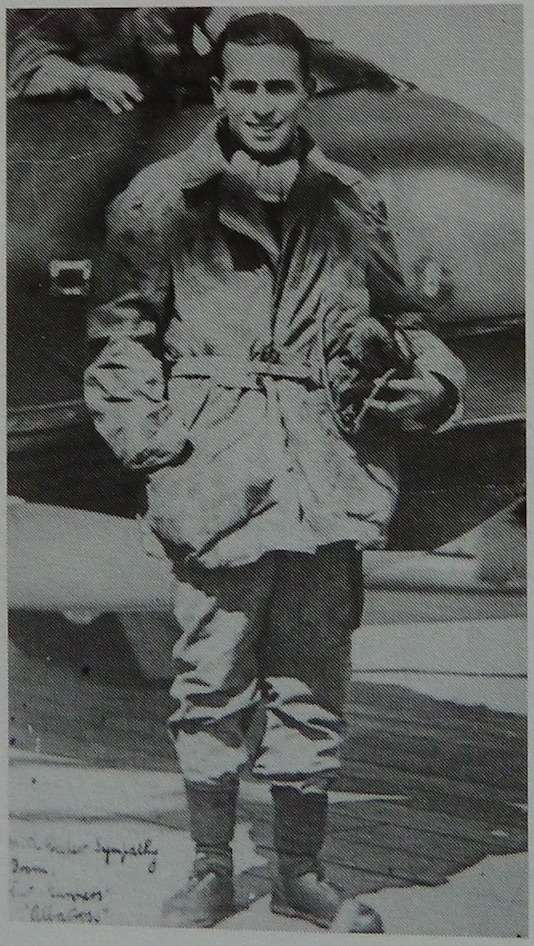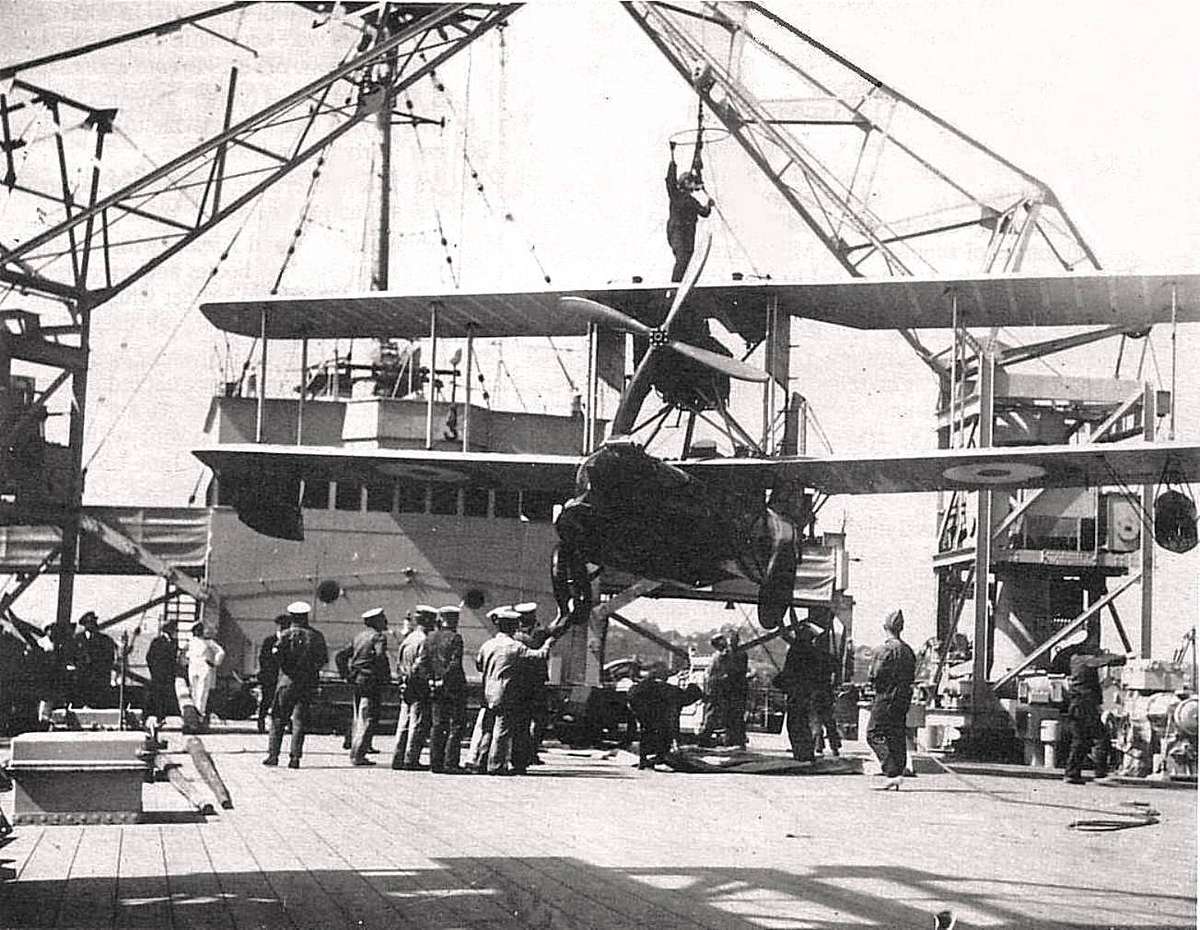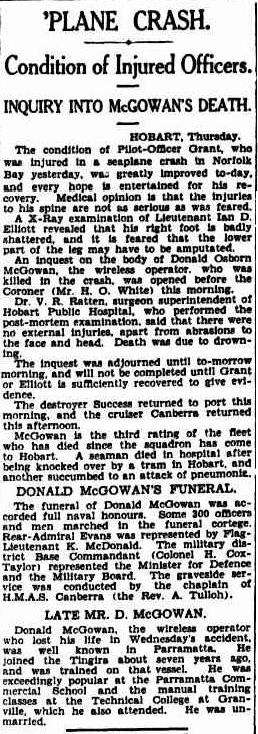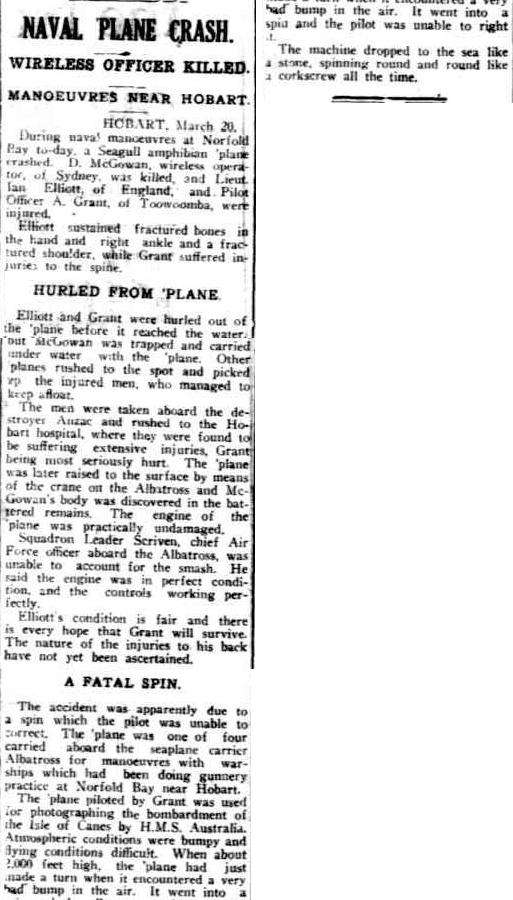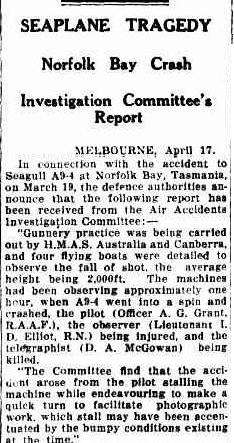Donald Oswin McGowan was born in Sydney on 22 July 1908. He joined the Navy as a boy on 8th February 1923, a few months short of his 15th birthday, and initially served aboard the Boys’ Training Ship HMAS Tingira until he was posted on 30th September 1923.
McGowan’s records are faded and hard to read, but we know he trained as a Telegraphist, passing his qualifying course with a ‘VG’ endorsement in May of the following year.
He subsequently served aboard the following ships as a Telegraphist rating: HMAS Platypus (Destroyer Tender and Repair Ship); HMAS Sydney (Battle Cruiser); HMAS Adelaide (Cruiser); HMAS Brisbane (Cruiser); and HMAS Albatross (Seaplane Tender).
Whilst aboard these ships he served in the Australia/New Zealand areas, Singapore, New Guinea, Solomon Islands and Hawaiian areas.
In August 1929 he passed the qualifications necessary to become a Telegraphist Air Gunner, and was posted to HMAS Albatross, the RAN’s seaplane tender which was equipped with Supermarine Seagull Mk lll amphibian aircraft. These were of wood and fabric construction, and carried a crew of three in open cockpits.
On 19 March 1930 the ship was engaged in fleet exercises in Norfolk Bay, Tasmania which involved, amongst other things, a gunnery shoot. Four Seagulls were dispatched that morning to spot the fall of shot, one of which carried Pilot Officer Grant (RAAF) [Pilot]; Lieutenant Ian Elliott RN [Observer], and Leading Telegraphist Donald McGowan in his capacity as Telegraphist Air Gunner. Grant and Elliott were reportedly the RAAF and Naval ship’s photographic officers, respectively.
McGowan’s aircraft, serial A9-4, had been airborne for about 90 minutes when it was observed spinning vertically towards the sea from its assigned altitude of 2500 feet. It struck the water about 400 metres from shore, but remained above the surface with its right wingtip and rudder awash.
As soon as the shoot was halted an accompanying machine landed adjacent to the accident site to find the two badly injured officers clinging to the wreckage, but no sign of Don McGowan. His body was subsequently recovered and taken to Hobart, where a post mortem examination determined death by drowning.
Subsequent investigation could find no technical reason for the crash, and it was surmised the aircraft entered into a spin when the pilot allowed the airspeed to drop too low. He was manoeuvring to position his aircraft to better spot/photograph the fall of shot, and the flying conditions were reported as ‘bumpy’. The pilot was not held responsible, however, and McGowan’s father, a widower, was not paid compensation for the tragic loss of his son.
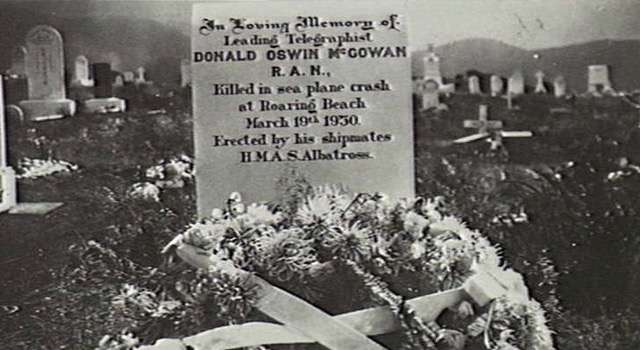 Leading Telegraphist McGowan was accorded a funeral with full naval honours, with his cortege passing down Elizabeth Street, Hobart. Over 300 officers and men marched behind the gun carriage, and many thousands of ordinary people watched from either side of the street. The graveside service at Cornelian Bay Cemetery was conducted by the chaplain of HMAS Canberra, and the impressive headstone was paid for by the Ship’s Company of HMAS Albatross in memory of a young life lost in the Service of his country.
Leading Telegraphist McGowan was accorded a funeral with full naval honours, with his cortege passing down Elizabeth Street, Hobart. Over 300 officers and men marched behind the gun carriage, and many thousands of ordinary people watched from either side of the street. The graveside service at Cornelian Bay Cemetery was conducted by the chaplain of HMAS Canberra, and the impressive headstone was paid for by the Ship’s Company of HMAS Albatross in memory of a young life lost in the Service of his country.
Compiled by Marcus Peake from the following references:
File No.N24/1/7 DSP(R) 789/82 Navy Office,
Hobart Mercury.
Slipstream Volume 8 No.3 October 1997
Mr Russ Ames
Article from the EXAMINER Saturday 22 March 1930 :
SEAPLANE CRASH Probable Explanation Turning at Low Speed HOBART, Friday.
The inquest concerning the death of Donald Oswin’ McGowan, who was drowned as a result of the crash of one of the H.M.A.S. Albatross seaplanes on Wednesday was resumed before the coroner (Mr. H. B. White) yesterday. The metropolitan superintendent (Mr. W. G. Oakes) conducted the enquiry on behalf of the police.
Lieut-Commander G. R. Deverell 4 stated that he was an observer on H.M.A.S. Albatross. On March 19, he was flying in a seaplane in the vicinity of the Isle of Caves, Norfolk Bay, for the purpose of photographing the fall of shells for a bombardment practice of H.M.A.S. Australia. Seaplane No. A9-4, pilot, Pilot Officer Grant, Observer, Lieut. Elliott, and Telegraphist, Leading Tel McGowan was also flying in the vicinity for the same purpose. Witness had ordered A 9-4 to take observations at 2500 feet. About 10.30 he saw this ‘plane at about 2040 feet spinning vertically down to the sea. He watched hoping the pilot would be able to pull her out of the spin, but she finally crashed into the sea about a quarter of a mile from Roaring Beach.
Wreckage Afloat. Witness immediately made a signal to the Australia telling her to cease fire and as soon as the signal was answered, he same down and landed near the wreckage: The crashed machine was floating with its right wingtip and rudder awash. The two officers were clinging to the wreckage but there was no sign of McGowan. He managed to haul Grant into his machine, but could not get Elliott out of the water. They supported him in the water for a few minutes until boats arrived from H.M.A.S. Anzac. His ‘plane had drifted some distance from the crash and had anchored. They shouted to Anzac boats that there was still one man unaccounted for and one boat immediately went to the wreck.
The Albatross boat arrived at this time and also went to the spot. Men dived from each boat, but could not find the drowned man. Petrol escaping from the machine got into their eyes and temporarily blinded them.
The aircraft returned to H.M.A.S. Albatross as soon as the ships boats, arrived on the scene.
Superintendent Oakes: Would the concussion of the firing of the guns have any effect on the seaplanes?
Witness: None at all.
The coroner: Was the seaplane you were in of the same type as the one which crashed? Yes, exactly the same.
Machine Inspected. Squadron Leader V. R. Scriven said he was the officer commanding the 101 flight R.A.A.F. attached to H.M.A.S. Albatross. On March 19, in accordance with his instructions, Grant proceeded to carry out a photo graphic flight at 9.30 on this day. Before the aircraft left the ship, it was carefully inspected for both the engines and controls which were certified to be correct and in good working order and were certified by Grant to be serviceable. The aircraft was Grant’s own machine which he always flew.
Witness had flown the machine quite recently, and found it to be in good order, flying very well. He examined the wreckage, and was unable to find any faulty workmanship or failing materials or controls.
The engine had been completely dismantled and there was no sign or evidence of any part failing. Every part appeared to be In good order. This aircraft was always inspected before and after flight and overhauled at the end of each 20 hours flying.’
Superintendent Oakes: You have had several years experience of flying?
Witness: Yes.
Superintendent Oakes: Can you offer any opinion of the cause of the crash?
Witness: Yes, I am of the opinion that when the seaplane was manoeuvring to obtain a satisfactory position and returning with a view to getting almost into a vertical position, the speed was too low and that caused a spill which would create an air pocket. I really thought that the pilot lost control of the machine. I am of the opinion that the accident was caused by turning at a low rate of speed.
The coroner: Would you say it was Inadvisable to turn at too low a speed?
Witness: Yes, it is always inadvisable to do so, but the rate might not have been too low if it were not for the air pocket. The bump was really the physical condition of the air.
There was nothing wrong with the machine which was just as safe as a more modern machine. Every machine was inspected by the rigger and the fitter as to her engine, and afterwards the pilot flew the machine, and if he found a defect, he reported it and the machine was not again flown until the defect was attended to. Every time the ‘plane went up this in inspection was carried out.

